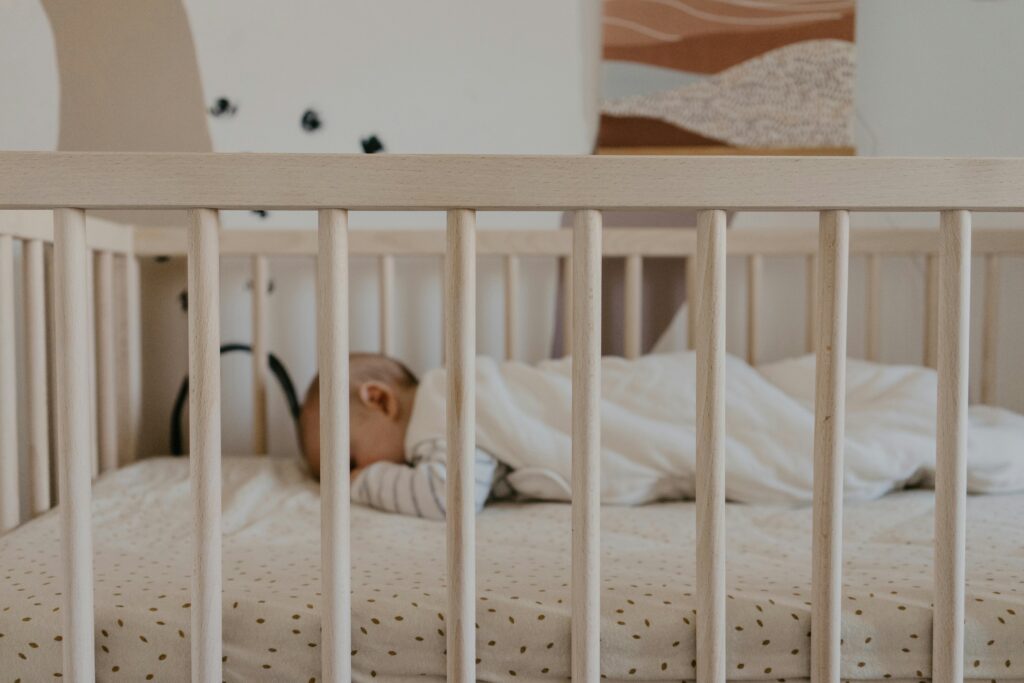If you’re a parent, you’ve probably tried every trick in the book to help your child fall asleep: dark curtains, bedtime routines, and white noise machines humming through the night. But lately, you might’ve seen headlines questioning whether white noise is actually good for babies’ brains (trending Instagram Video here). So what’s the truth? And what other options are out there if you want a calmer, quieter approach?
Let’s break it down.
What the research actually says about white noise
White noise has been a go-to sleep aid for decades because it masks household sounds (like barking dogs, clinking dishes, or city traffic) and helps babies drift off faster. Some studies even show it works: in one small trial, 80 % of infants fell asleep within five minutes with white noise playing, compared to 25 % without it [SOURCE].
But newer research is raising a few red flags. Scientists studying early childhood development note that constant, monotone noise might interfere with how babies process sound. One review found that long-term exposure to loud or continuous white noise could affect hearing and learning in animal models—and possibly in humans if used too often or too loud. [SOURCE]
The main concerns aren’t that white noise is bad, but that it can be overused:
- Volume: Many machines can exceed 85–90 dB at their highest settings (as loud as a blender). Experts recommend keeping noise below 60 dB—about the level of a quiet conversation. [SOURCE]
- Distance: Devices should be placed several feet away from a child’s crib, not right beside it.
- Duration: Some pediatric sleep specialists suggest using white noise only to help babies fall asleep, rather than playing it all night. [SOURCE]
So, while white noise can be effective, it’s worth exploring softer, safer alternatives—especially if you’re using it nightly.
Why are parents searching for white noise alternatives?
Every baby’s sleep rhythm is unique. Some love the steady hum, others stir at the faintest sound. And as kids grow, they may not need constant background noise at all.
Parents are also thinking more about how early sound exposure shapes development. Babies learn from their environment (even in sleep) and total noise masking might limit exposure to natural sounds (like talking, singing, or music) that support brain and language growth.
Gentle alternatives to white noise machines
If you’re ready to experiment, here are a few gentle, research-friendly alternatives to white noise machines that promote healthy, restful sleep.
1. Soundproof windows (reduce noise instead of masking it)
Instead of covering up sounds with a machine, you can tackle the problem at its source: outside noise. Soundproof windows are designed to block environmental noise like traffic, sirens, barking dogs, or late-night city sounds – making a room naturally quieter without needing to add artificial noise.
For families in busy urban areas or near streets, this can make a huge difference. Soundproof windows use layers of acoustic glass and airtight seals to significantly reduce sound transmission, often by 95% depending on the installation. That means your baby’s room stays peaceful without relying on a device running all night.
Bonus: soundproofing also improves temperature control and energy efficiency so your child’s room stays comfortable year-round.
Fun fact: the very first CitiQuiet window was actually invented for this exact reason — to help a newborn sleep soundly through the noise of a New York City apartment! What started as a tired parent’s solution has since helped thousands of families create calmer, quieter homes.
2. Nature sounds
Gentle rain, ocean waves, or rustling leaves can recreate the calming rhythm of nature without the harsh static hum. Many playlists and apps offer soft loops that fade naturally, so you can keep the volume low.
3. Pink noise
Think of pink noise as a softer, more balanced version of white noise. It emphasizes lower frequencies, making it sound more like wind or steady rain. Studies have found pink noise may help promote deeper sleep in adults and older children. [SOURCE]
4. Lullabies and calming music
Simple, repetitive melodies can help regulate breathing and heart rate. For infants, the sound of a parent’s voice—singing softly or even humming—is one of the most comforting sleep cues there is.
5. Quiet bedtime routines
Sometimes, the best “noise” is no noise at all. A consistent, soothing routine—dim lights, a short story, gentle rocking—helps signal to your child’s body that it’s time for rest. When paired with a calm environment, it often replaces the need for background noise entirely.
Tips for using sound safely
- Keep any sound below 60 dB (around normal conversation level).
- Place devices or speakers several feet away from where your child sleeps.
- Try alternating “quiet nights” to reduce dependency on sound cues.
- Watch your child’s reactions—if they sleep better without extra noise, lean into that.
The takeaway
White noise isn’t necessarily bad, but it’s not the only solution. Many families are finding that creating a naturally quieter environment works even better. Soundproof windows, gentle nature sounds, and consistent routines can all help babies and kids sleep peacefully without the potential downsides of constant artificial noise.
A quiet room, a soft routine, and a calm night’s sleep? That’s the real goal.




